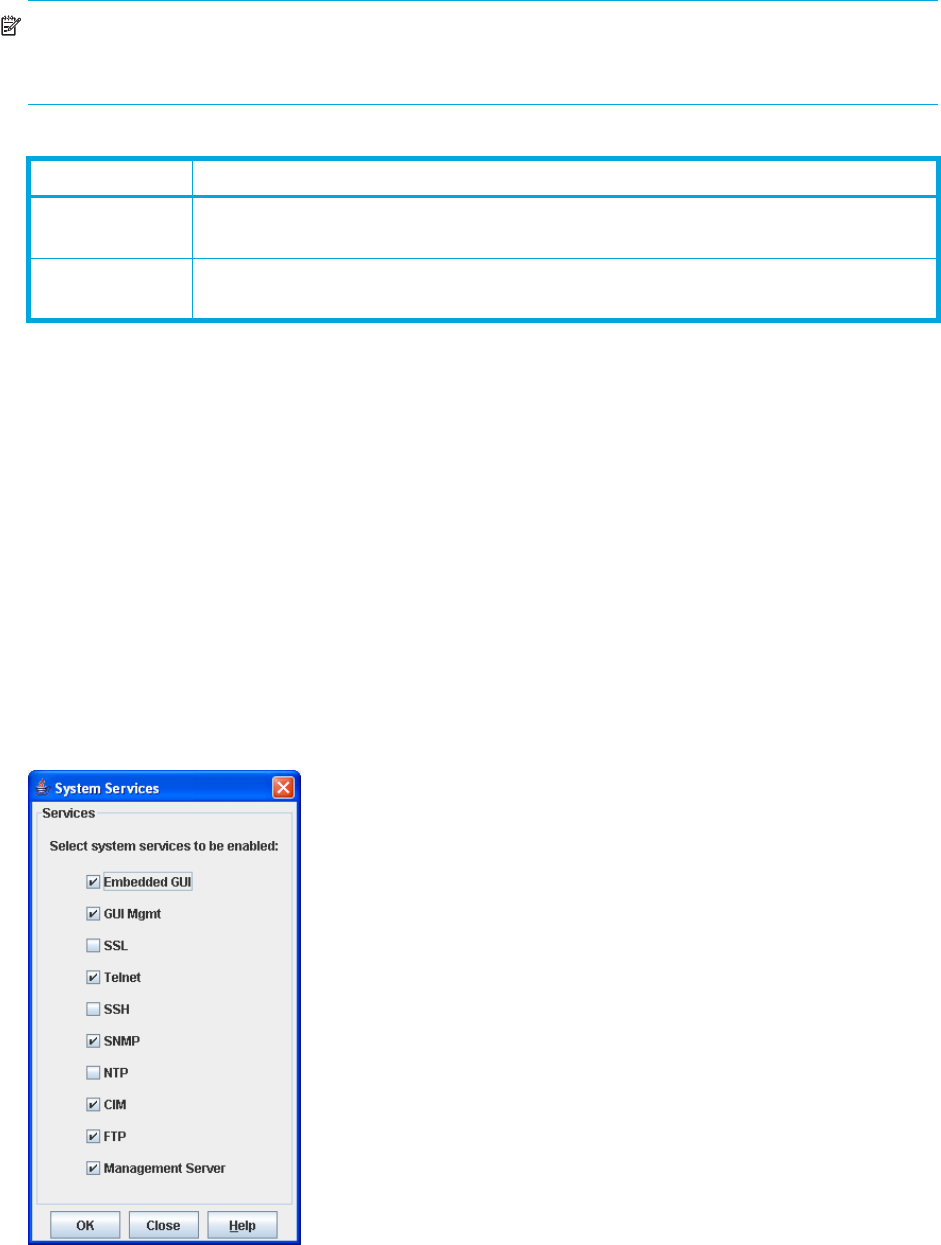User Manual
Table Of Contents
- Contents
- About this guide
- Using McDATA Web Server/Element Manager
- Managing Fabrics
- Securing a fabric
- Security consistency checklist
- Connection security
- User account security
- Remote authentication
- Device security
- Edit Security dialog
- Create Security Set dialog
- Create Security Group dialog
- Create Security Group Member dialog
- Editing the security configuration on a switch
- Viewing properties of a security set, group, or member
- Security Config dialog
- Archiving a security configuration to a file
- Activating a security set
- Deactivating a security set
- Configured Security data window
- Active Security data window
- Fabric services
- Rediscovering a fabric
- Displaying the event browser
- Working with device information and nicknames
- Zoning a fabric
- Zoning concepts
- Managing the zoning database
- Managing the active zone set
- Managing zones
- Merging fabrics and zoning
- Securing a fabric
- Managing switches
- Managing user accounts
- Configuring RADIUS servers
- Displaying switch information
- Configuring port threshold alarms
- Paging a switch
- Setting the date/time and enabling NTP client
- Resetting a switch
- Configuring a switch
- Archiving a switch
- Switch binding
- Restoring a switch
- Restoring the factory default configuration
- Downloading a support file
- Installing Product Feature Enablement keys
- Installing firmware
- Displaying hardware status
- Managing ports
- Glossary
- Index

McDATA® 4Gb SAN Switch for HP p-Class BladeSystem user guide 73
Timeout values
The switch timeout values determine the timeout values for all ports on the switch. Table 12 describes the
switch timeout parameters. The timeout values must be the same for all switches in the fabric.
NOTE: Mismatched timeout values will disrupt the fabric. These should not be changed unless absolutely
necessary. Therefore, the switch must be offline to change these values. Use the Switch Properties dialog to
take the switch offline.
Interop mode
Interop mode permits interoperability with other switches in the following environments:
• Standard: Permits interoperability with FC-SW-2 compliant switches and McDATA switches in Open
Fabric Mode. Valid domain IDs are 97–127.
• McDATA Fabric Mode: Permits interoperability with other McDATA switches in McDATA Fabric Mode.
Valid domain IDs are 1–31.
Enabling the 239 Domain Support option extends the valid domain IDs to 1–239 for both Standard and
McDATA Fabric Mode settings. However, all switches in the fabric must support 239 domain IDs.
System services
The System Services dialog provides a central location for you to enable or disable any of the external user
services such as SNMP, Secure Sockets Layer (SSL), Secure SHell (SSH), embedded switch management
application (McDATA Web Server or Element Manager), CLI, Network Time Protocol (NTP), and Common
Information Model (CIM). Select Switch > Services to display the System Services dialog shown in
Figure 32.
Figure 32 System services dialog
Table 12 Timeout values
Parameter Description
R_A_TOV Resource Allocation Timeout
—Represents the maximum time a frame could be
delayed in the Fabric and still be delivered. The default is 10000 milliseconds.
E_D_TOV Error Detect Timeout
—Represents the maximum round trip time that an operation
between two N_Ports could require. The default is 2000 milliseconds.










